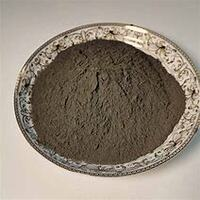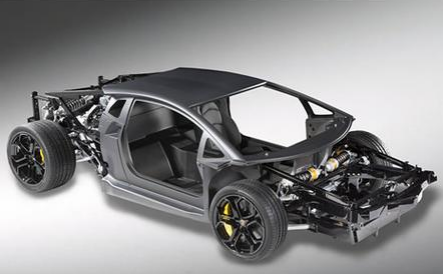1. Introduction
In a surprising twist that sent materials scientists scrambling for their lab notebooks, a major aerospace manufacturer quietly announced yesterday that it’s shifting 30% of its jet engine bracket production to titanium powder-based additive manufacturing—citing cost savings and supply chain resilience. This news, reported by Advanced Manufacturing Today, underscores just how critical titanium powder has become beyond its pyrotechnic reputation. Spoiler: it’s not just for making backyard fireworks that look like dragon sneezes.

Forget the myths about titanium powder being some exotic, unobtainable substance locked in a vault guarded by metallurgists in lab coats. Today, titanium powder—often abbreviated as Ti powder—is a versatile industrial material with grades, shapes, and price tags as varied as your favorite coffee orders. Whether you’re into 3D printing jet parts or just wondering why your powdered sugar glows under UV light (thanks, TiO2!), this deep dive unpacks what really matters.
2. The Many Faces of Titanium Powder
2.1. Pure Titanium Powder vs. Titanium Alloy Powder
Pure titanium powder (Grade 1 or 2) is the minimalist’s choice—great corrosion resistance, biocompatibility, and relatively low strength. But if you’re building something that needs to survive a rocket launch or a hip replacement, you’ll likely reach for titanium alloy powder. The superstar here is Ti6Al4V powder (also called Ti64 powder), which blends titanium with 6% aluminum and 4% vanadium. It’s the Beyoncé of metal powders: strong, lightweight, and always in demand.
2.2. Spherical vs. Irregular: Shape Matters

Not all titanium dust is created equal. Gas atomized titanium powder produces near-perfect spheres—ideal for smooth flow in 3D printers. HDH (Hydride-Dehydride) titanium powder, on the other hand, yields jagged, irregular particles better suited for pressing and sintering. Think of it like comparing marbles to gravel: one rolls beautifully, the other packs tightly.
3. Specialty Powders: Beyond the Basics
3.1. Titanium Nitride, Carbide, and Diboride Powders
Enter the exotic cousins: titanium nitride powder (gold-colored and ultra-hard), titanium carbide powder (used in cutting tools), and titanium diboride powder (TiB2 powder)—a ceramic-metal hybrid with insane wear resistance. These aren’t your go-to for 3D printing aerospace parts, but they’re vital in coatings, composites, and armor. And yes, titanium boride powder sounds like a villain from a sci-fi anime—but it’s real, and it’s expensive.
3.2. Nano and Flash Variants

TiO2 nano powder? That’s titanium dioxide in nanoparticle form—common in sunscreens and paints, not structural parts. Meanwhile, titanium flash powder (a mix of Ti and oxidizer) is strictly for pyrotechnicians who enjoy controlled chaos. Burnt titanium powder coat? That’s usually an oxide layer from overheating—not a feature, but a flaw.
4. Titanium Powder for 3D Printing: The Additive Manufacturing Revolution
Additive manufacturing has turned titanium powder into a hot commodity. Titanium powder for 3D printing must be spherical, clean, and oxygen-controlled—hence the premium on gas atomized titanium powder. Prices? Buckle up. Titanium powder for 3D printing price ranges from $300 to $800 per kg, depending on purity and certification. Ti6Al4V powder price sits at the higher end, often exceeding $600/kg. Compare that to pure titanium powder, which might cost $250–$450/kg.
Why so pricey? Blame the Kroll process, inert atmosphere handling, and the fact that titanium metal powder doesn’t grow on trees (though it does come from them—mined ilmenite and rutile, to be precise). Still, as 3D printing scales, expect titanium 3d printing powder costs to gradually fall.
5. Pricing and Procurement: What’s the Real Cost?
When you search ‘titanium powder price per kg’ or ‘ti powder price,’ prepare for sticker shock. Titanium powder cost hinges on form (spherical vs. HDH), alloy type, particle size, and supplier certification. Reputable titanium powder suppliers like Carpenter Additive, VSMPO-AVISMA, or international titanium powder vendors dominate the market—but you can also find titanium powder for sale from smaller distributors if you’re not building a satellite.
Pro tip: Don’t confuse titanium dioxide powder (TiO2 powder)—used in cosmetics and food—with titanium metal powder. One whitens your toothpaste; the other builds your drone frame. Mixing them up could lead to very awkward engineering meetings.
6. Titanium vs. The Competition: Molybdenum and Tungsten Powders
While titanium shines in lightweight strength, molybdenum powder (moly powder) and tungsten powder play in the high-temp, high-density arena. Molybdenum metal powder excels in furnace parts and electronics; tungsten metal powder (wolfram powder) is the heavyweight champ—dense, heat-resistant, and used in radiation shielding. Tungsten powder price per kg often beats titanium on raw cost, but its weight makes it impractical for aerospace.
Specialty variants like molybdenum disulfide powder (MoS2 powder) serve as dry lubricants, while tungsten carbide powder reinforces cutting tools. Global Tungsten & Powders Corporation and similar suppliers cater to these niches. But if you need strength-to-weight ratio? Titanium still wins.
7. Conclusion
Titanium powder isn’t just a flashy novelty—it’s a cornerstone of modern manufacturing, from life-saving implants to Mars-bound rockets. Whether you’re weighing ti6al4v powder price for a startup or just curious about titanium nanopowder, understanding the differences between gas atomized, HDH, and alloyed forms is key. And while molybdenum and tungsten powders have their place, titanium’s blend of lightness, strength, and versatility keeps it in a league of its own. So next time someone asks, ‘Is titanium powder cheaper than titanium wire?’—you’ll know the real answer: it depends on what you’re building… and whether it needs to fly.
Our Website founded on October 17, 2012, is a high-tech enterprise committed to the research and development, production, processing, sales and technical services of ceramic relative materials such as Titanium. Our products includes but not limited to Boron Carbide Ceramic Products, Boron Nitride Ceramic Products, Silicon Carbide Ceramic Products, Silicon Nitride Ceramic Products, Zirconium Dioxide Ceramic Products, etc. If you are interested, please feel free to contact us.
